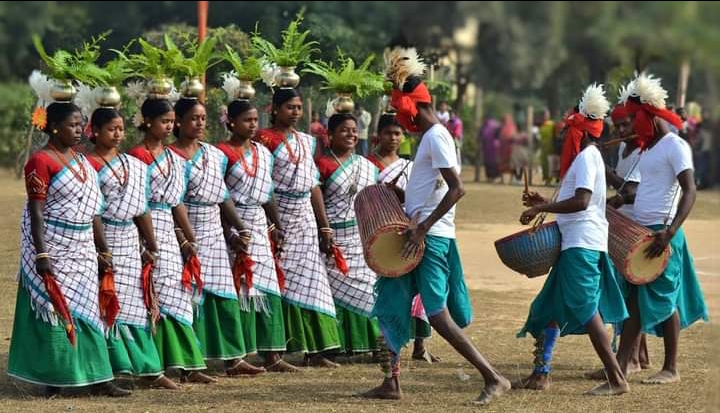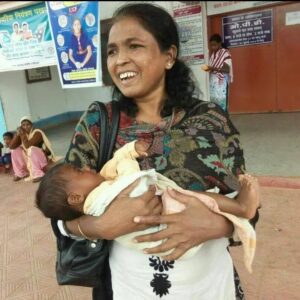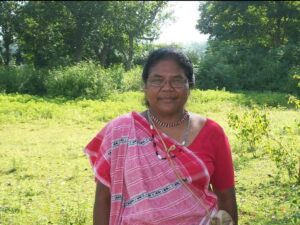Besides Draupadi Murmu, 5 Tribal Women You Should Know About
The recent election of Draupadi Murmu as the first tribal President of India has put the focus on the state of tribal communities, especially the women. Beyond Murmu, there are many tribal women who have been taking up the cause of their community and fighting for not only protecting tribals’ rights, but also help in preserving tribal art, culture and heritage.
Constituting a population of about 100 million in India, tribal communities are found in most parts of the country, though a large concentration of various tribes lives in the villages and towns located near the forests of central, eastern, southern and northeastern India. For long, these indigenous populations have been suppressed and have lacked basic amenities like housing, water, electricity, education, healthcare and employment. The situation of tribal women has generally been worse off.
Despite these challenges, some tribals, including women, have managed to emerge as successful entrepreneurs. Here is a list of five such women:
Ruby Hembrom
Ruby Hembrom, an indigenous cultural practitioner, documentarian, writer and publisher was born on April 2, 1978 in Kolkata, West Bengal. Her native village is Bhururbani, Jhargram in West Bengal. She is a Santhal, the largest community of Indian tribals.

Ruby Hembram, Adivaani’s first book Gladson Dungdung’s ‘Whose Country is it anyway?’ in the year 2013 (Photo: Adivaani)
Hembrom is a founder and director of Adivaani Organisations, or “voice of Santal peoples”, a non-profit platform for indigenous expression and assertion that was founded in July 2012.
Ruby Hembrom started the publishing house Adivani in 2012 for the tribals to tell their stories and express themselves in the field of publishing. Hembrom felt that though Adivasis have always been brilliant story tellers, their stories were only carried forward in the form of oral narratives.
It was time to convert these treasure stories in the form of books so that they can be conserved for the people to read. Therefore, Adivaani began to publish books on Adivasi histories and folktales.
The publishing house has published the award-winning picture book Disaibon Hul on the 1855 Santhal Rebellion and Sylvan Tales: Stories from the Munda Country.
2. Lipsa Hembram – Galang Gabaan
Hailing from the Santhal tribe in Dandbose village of Mayurbhanj district of Odisha, Lipsa grew up watching her family wearing the Santhali traditional dress at festivals and gatherings. An alumnus of the National Institute of Fashion Technology, Hyderabad, she understood its cultural relevance only after being exposed to the fashion industry.
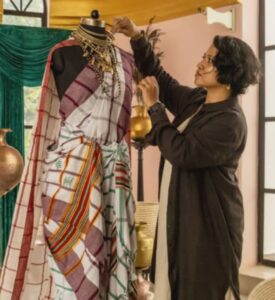
Galang Gabaan retails modern Santhali saree in cotton and silk across the country (Photo: Lipsa Hembram Instagram)
Through her designs, 36-year-old fashion designer Hembram wants to bring the Santhali culture to the forefront in a contemporary essence. So she started a textile company Galang Gabaan, that means creating something with utmost care. At Galang Gabaan, she designs and manufactures traditional Santhal sarees.
Through her company, Hembram has brought about socio-economic changes among tribal communities through fashion. She conceived the idea of her business, when her mother complained about the length and coarseness of traditional Santhali sarees. Based in Bhubaneswar, the label Galang Gabaan has become famous over the years for its vibrant motifs and colours along with retailing modern Santhal sarees in cotton, linen and silk to patrons across the country.
3. Soni Sori
Renowned tribal rights activist and a school teacher, Soni Sori was born on April 15, 1975 in Bade Bedme in Chhattisgarh. Sori works in the Dantewada region of southern Bastar district in Chhattisgarh. Due to her activities and work for tribal rights, Sori has been attacked by assailants and also jailed by the police on numerous occasions. In April 2016, the 47-year-old activist was attacked in Bastar by unidentified men who threw a black acid-like substance on her face.
Later she was arrested on the charges of being an intermediary to the Maoists, and allegedly faced brutal forms of sexual violence during her time in jail. Such incidents made Soni become a fearless and vocal critic of police violence and brutality towards tribals in the state of Chhattisgarh. It was only when the case attracted international condemnation that Sori was released.
In 2018, Soni Sori was a recipient of the 2018 Front Line Defenders Award for Human Rights Defenders at Risk, in recognition of her dangerous struggle for justice for the Adivasi community in the Bastar region of Chhattisgarh.
Over the years, Sori has inspired many Adivasi women to take stand and speak against the sexual violence and assaults they have suffered from local police.
4. Dayamani Barla
Dayamani Barla is a tribal journalist and activist from Jharkhand, she got recognized for her activism in opposing Arcelor Mittal’s steel plant in Eastern Jharkhand which was signed by state government in 2005, which would have displace forty villages.
“We will not give an inch of our land” says Barla and raised voices for Adivasis, Dalits and women. Barla still fights for the tribal people for their Jal (Water), Jungle (Forest), Jamin (Land). Barla believes that for one’s own right people should fight. Currently Barla is running a tea shop, which is her source of livelihood, along with journalism.
Barla has won awards for journalism like Counter Media Award for Rural Journalism in 2000 and the National Foundation for India Fellowship in 2004.
5. Tulasi Munda
Tulasi Munda was born on July 15, 1947 in Kainshi, Odisha. She is a social activist believing that the goal of education is to improve lives. Tulasi is illiterate and has no formal education because she grew up in an age of post-independence when poverty and illiteracy was all over the place and importance of education was not given for the girl child. She had been a child labourer in the mines of Keonjhar and in order to save the local Adivasi children of Odisha from doing child labour in mines, she started an informal school in 1964 in Odisha’s iron ore mining area. She belongs to the Munda ethnic group of Tribe. She is popularly known as “Tulasi Apa”, literally meaning “Sister Tulasi” in Odia.
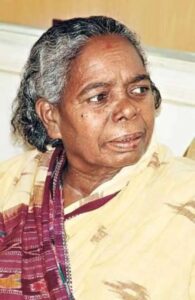
Tulasi Munda is an illiterate, who strives to educate children to save them from child labour (Photo: Tulasi Munda facebook)
In 2001, Tulasi was awarded Padma Shri by the Government of India for contributing literacy among the Adivasi people of Odisha.
Also Read – Assam’s tribal communities lose home to mining.
Warli Art: Journey from walls of tribal homes to household goods.
Tribal woman’s murder in Guna puts spotlight on tribal rights.
Pithora art: Depicting different hues of tribal life.

